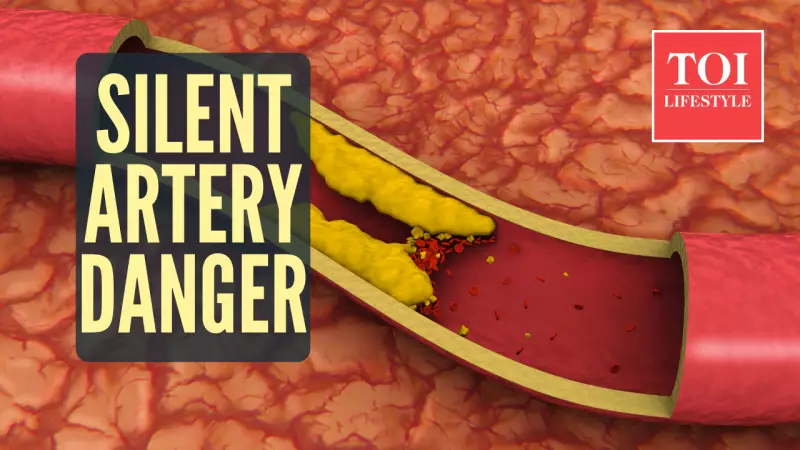
Understanding Peripheral Artery Disease: More Than Just a Limb Problem
Peripheral Artery Disease, commonly known as PAD, represents a significant health concern where the arteries supplying blood to the legs and feet become narrowed or blocked. This condition primarily results from atherosclerosis, the gradual buildup of fatty plaque inside vessel walls. What many people don't realize is that medical guidelines classify PAD as a major cardiovascular disease rather than merely a limb issue.
Large-scale studies have demonstrated that individuals diagnosed with PAD face a substantially higher risk of heart attacks and strokes. This increased risk occurs because the same process that clogs leg arteries often affects coronary and carotid arteries simultaneously. The severity of PAD can vary dramatically from mild cases with no obvious symptoms to severe forms like critical limb ischemia, where restricted blood flow can lead to ulcers, infections, or even gangrene.
The Five Major Culprits Behind Peripheral Artery Disease
High Blood Pressure: The Silent Artery Damager
High blood pressure stands as a powerful force behind the arterial damage that leads to Peripheral Artery Disease. Research from the Atherosclerosis Risk in Communities (ARIC) cohort revealed that people with hypertension face 1.5 to 2 times higher risk of developing PAD compared to those maintaining normal blood pressure levels.
Hypertension contributes to PAD development through multiple mechanisms: it damages artery walls, accelerates atherosclerosis progression, and increases arterial stiffness. Implementing lifestyle changes such as reducing salt intake, engaging in regular exercise, and maintaining healthy weight can significantly help control blood pressure and reduce PAD risk.
High LDL Cholesterol: The Plaque Builder
Often termed 'bad cholesterol,' high LDL levels strongly correlate with PAD development. A landmark study confirmed that elevated LDL levels significantly associate with incident PAD, even after accounting for other risk factors like smoking and hypertension. A comprehensive meta-analysis published in Lancet further established that every 1 mmol/L reduction in LDL cholesterol reduces the risk of major vascular diseases, including PAD, by approximately 20-25%.
LDL cholesterol promotes PAD by infiltrating artery walls to form plaque, triggering inflammation and foam-cell formation, and accelerating the narrowing process in leg arteries. Adopting a heart-healthy diet rich in vegetables, fruits, whole grains, and healthy fats while limiting saturated and trans fats can effectively manage cholesterol levels.
Diabetes: The Vascular Compromiser
Diabetes substantially elevates the risk of developing Peripheral Artery Disease. The renowned Framingham Heart Study indicated that people with diabetes experience nearly double the risk of developing PAD compared to non-diabetics. Further analysis confirmed that every 1% rise in HbA1c levels significantly increases the risk of vascular complications, including PAD.
Diabetes contributes to PAD development by interfering with lipid metabolism, causing microvascular and nerve damage, and damaging artery walls through endothelial dysfunction. Effective diabetes management through regular exercise, balanced nutrition, weight control, and proper medication adherence can help protect arteries from damage.
Smoking: The Most Powerful Modifiable Risk Factor
Smoking emerges as the single most powerful modifiable risk factor for Peripheral Artery Disease. A substantial meta-analysis reported that current smokers face nearly 2.7 times the risk of developing PAD compared to non-smokers, with heavy smoking increasing this risk even further.
The damaging effects of smoking on peripheral arteries include direct damage to artery walls and endothelial cells, plus reduced oxygen delivery to leg muscles. Long-term studies indicate that the elevated PAD risk persists for years after quitting, underscoring the cumulative effect of smoking on vascular health.
Prevention and Early Intervention: Your Shield Against PAD
Early diagnosis and timely treatment play crucial roles in preventing long-term complications associated with Peripheral Artery Disease. Since PAD can range from asymptomatic to severe, recognizing risk factors and implementing preventive measures becomes essential for maintaining vascular health.
Managing these primary risk factors through lifestyle modifications and medical interventions can significantly reduce your likelihood of developing PAD and its associated cardiovascular complications. Regular health check-ups, particularly for individuals with these risk factors, enable early detection and more effective management of this serious condition.





